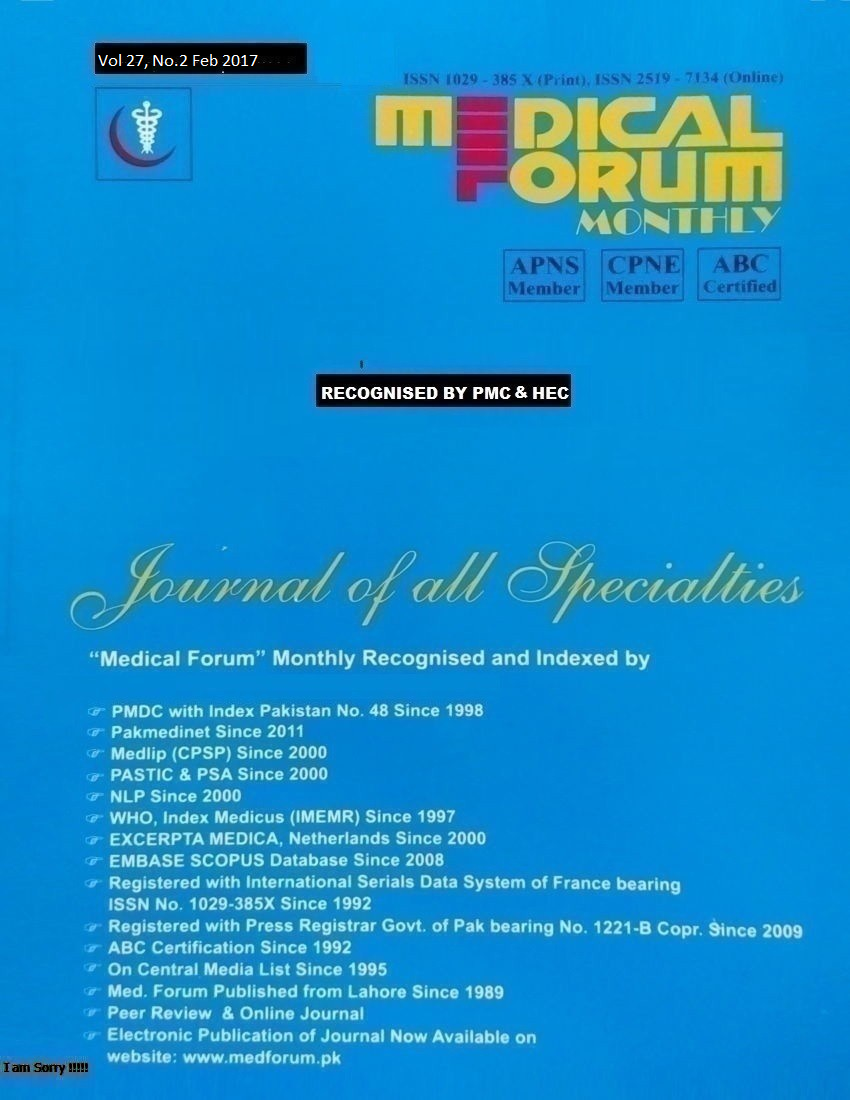
8. Impact of Putative Bacteriocins against Multidrug Resistant Clinical Isolates
1. Samyyia Abrar 2. Saba Riaz
1. PG Student, Deptt. of Microbiology and Molecular Genetics 2. Asstt. Prof. of Microbiology and Molecular Genetics, University of the Punjab, Lahore
ABSTRACT
Objective: To use one of such mechanism like bacteriocins, produced by Lactobacilli activities against pathogens.
Study Design: Analytical / observational study
Place and Duration of Study: This study was carried out at Gulab Devi Chest Hospital, Lahore from November 2012 to January 2013.
Materials and Methods: This study included 203 clinical samples. Multidrug resistant clinical isolates were selected on the basis of their MAR (Multiple antibiotic resistances) index, antibiotic susceptibility testing, methicillin resistant Staphylococcus aureus (MRSA) with oxacillin disc, double disc synergism and combination disc test. Plasmid isolation, conjugation was performed. Well-Diffusion assay was used for screening of putative bacteriocins produced by Lactobacillus strains against MDRs. Physiological characterization of antimicrobial compounds and protein estimation was analyzed.
Results: Twenty five strains were selected based on MAR index (>0.2). In which 6 MRSA and 19 extended spectrum beta-lacatmases (ESBL) producers were further proceeded for antimicrobial activity with putative bactericins. Plasmid was easily transferred their resistance by the pr cess f c njugation. Five bacteriocins were obtained from Lactobacillus strains isolated from commercial products. These bacteriocins showed a strong anti-bacterial activity against selected MDRs. Decrease in zone sizes was bserved when putative bacteriocins were treated with heat, SDS (Sodium dodecyl sulfate) and Protinase k. Putative bacteriocins produced by Lactobacilli exhibit significant antibacterial activity against MDRs. SA1 has high antibacterial activity with high protein content of 13mg/ml.
Conclusion: Putative bacteriocins produced by Lactoba lli exh bit significant antibacterial activity against selected MDRs. MDRs have ability to transfer their res sta e to other bacteria. The peptidal component of these bacteriocins can be used as an alternative therapy. Proper hosp tal policies require minimizing the horizontal spread of MDRs. Hence, it is necessary to purify the a tibacterial molecule out of putative bacteriocin for further analysis. Key words: MDRs, Bacteriocins, Lactobacilli, Antibi tic Resistance, MAR, Antibacterial activity
Citation of article: Abrar S, Riaz S. Impact f Putative Bacteriocins against Multidrug Resistant Clinical Isolates. Med Forum 2016;27(2):28-32.
